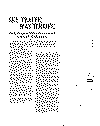I encourage anyone that has more information (Flight Log Book entries) or photos on 112 Squadron please send an e-mail to raf_112_sqdn@yahoo.com before the history is lost.
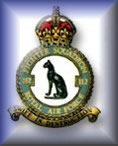
Internet Finds of RAF 112 Sqn Personnel
C to D
The Americans, New Zealanders, The Polish Pilots
CALDWELL, Clive Robertson, F/L, DFC (Aus 402107, Royal Australian Air Force) - Krzvza Walecenvch (Croix des Vaillante) (Poland) - awarded as per London Gazette dated 4 August 1942.
In
January 1942, he was promoted to Acting Squadron Leader of 112 Squadron RAAF,
being the first Empire Air Training Scheme pilot to achieve squadron command.
The Kittyhawks of 112 Squadron were famous for their shark's mouth insignia,
and Clive led with distinction this squadron that contained many Polish
fighter pilots. Clive was innovative and developed the practice of shadow
shooting, a training method in deflection shooting so necessary in aerial
combat and a procedure which subsequently was adopted by all squadrons. He
also developed safe methods for fighter aircraft bombing that led to most
fighter aircraft being fitted with bomb racks and assuming an additional role
in air warfare. Later in the war, while in Darwin, he considered the
Spitfire's armament to be too light and fitted his Spitfire with heavy calibre
machine-guns. However, before it was flown in combat, the RAAF reprimanded him
as it had been done unofficially and the guns were removed. Later, in England,
the arming of many Spitfires with these heavy machine-guns became standard.
Air Marshal Tedder paid Clive Caldwell the rare
compliment of endorsing his log book with the personal assessment: `A fine
commander, an excellent leader and first-class shot'. Clive was further
honoured by the Royal Air Force with the award of a Distinguished Service
Order and also honoured by General Sikorsky, Commander-in-Chief of the Polish
forces, by being awarded the Polish Cross of Valour. In later years, it was
discovered that, in late 1945,
the RAAF, through the Commander Air Services, Sir George Jones, had made the
following notation on Clive's file: `This officer is an Empire Air Trainee and
is considered sufficiently decorated, and should not be further rewarded'.
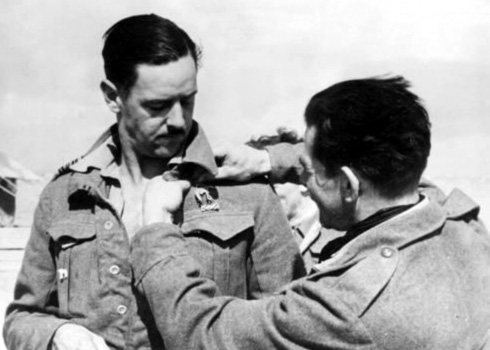
Hello, as an attachment I am sending you a photo showing S/Ldr C. Caldwell decorated with polish pilot wings, so called "gapa". I am not certain, if you have already got it or not (lately I haven't visited your website). Best regards Wojtek
| Name | CALDWELL, CLIVE ROBERTSON, 250 & 112Sq, Kenley Wing, victories 20.5 |
|---|---|
| Service | Royal Australian Air Force |
| Service Number | 402107 |
| Date of Birth | 28 Jul 1911 |
| Place of Birth | SYDNEY, NSW |
| Date of Enlistment | 27 May 1940 |
| Locality on Enlistment | Unknown |
| Place of Enlistment | SYDNEY, NSW |
| Next of Kin | CALDWELL, JEAN |
| Date of Discharge | 5 Mar 1946 |
| Rank | Flight Lieutenant |
| Posting at Discharge | 80 Wing Headquarters |
| WW2 Honours and Gallantry | Companion of the Distinguished Service Order, Distinguished Flying Cross and bar |
| Prisoner of War | No |
Australia's highest scoring ace of the Second World War, Clive Caldwell died in Sydney in August 1994, aged 84
2 Aus Brothers in 112 sqn
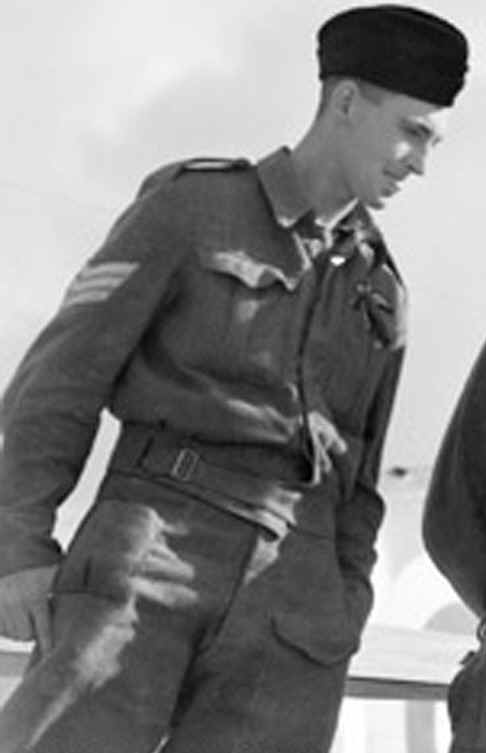
|
|
|
|
Royal
Australian Air Force |
|
|
404233 |
|
|
30
Jun 1920 |
|
|
CHILDERS,
QLD |
|
|
19
Jul 1940 |
|
|
BRISBANE,
QLD |
|
|
CARSON,
BEATRICE |
|
|
17
Oct 1945 |
|
|
Flight
Lieutenant |
|
|
1
RAF DEPOT |
|
|
Yes |
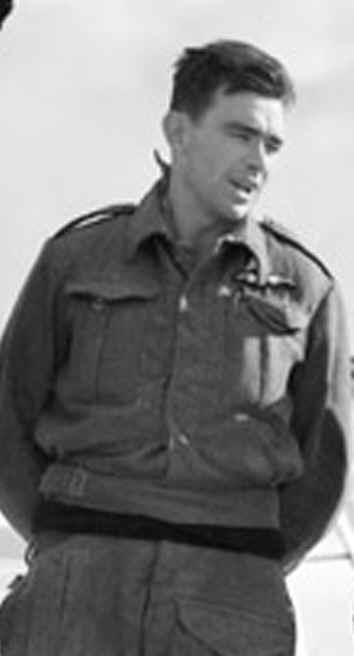
|
CARSON,
|
|
|
Royal
Australian Air Force |
|
|
4 |
|
|
11
Jul 1916 |
|
|
AYR,
QLD |
|
|
21
Jun 1940 |
|
|
BRISBANE,
QLD |
|
|
CARSON,
BEATRICE |
|
|
11
Mar 1946 |
|
|
Flight
Lieutenant |
|
|
36
Squadron |
|
|
No |
| Name | CASSELL, STUART DYMOCK |
|---|---|
| Service | Royal Australian Air Force |
| Service Number | 402307 |
| Date of Birth | 9 Aug 1921 |
| Place of Birth | YENDA, NSW |
| Date of Enlistment | 19 Aug 1940 |
| Locality on Enlistment | Unknown |
| Place of Enlistment | SYDNEY, NSW |
| Next of Kin | CASSELL, THOMAS |
| Date of Discharge | 10 Jan 1947 |
| Rank | Flight Lieutenant |
| Posting at Discharge | EASTERN AREA HEADQUARTERS |
| WW2 Honours and Gallantry | None for display |
| Prisoner of War | No |
Sgt
James Roy Carr, RAFVR, 1620942
Son of Reginald and Dorothy Mary Carr, of Greenhill, Sheffield.
Anyone with more information please contact me and I will forward it to Ian.
Thanks Rob
Flt Sgt H. W. Carter, NCO in charge "A" Flight, 1237091, 112 Squadron, POW, Greece/ Crete probable service dates are 16/05/39 to 11/05/41
Photo supplied by Patricia Molloy daughter of J. F. Fraser
Plt Off Robert Hugh Chapman, 36161 Raf , 112 Sqdn 16/5/39 to 10/9/40
Photo supplied by Patricia Molloy daughter of J. F. Fraser
Fg Off Leonard (Len) Henry Cherry, 114723, RAFVR, RAF 112 Sqdn Service 14/2/43 to 6/3/44
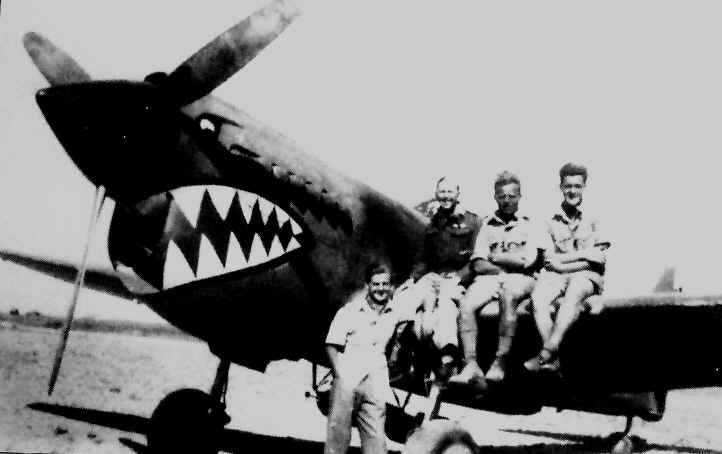
Fg Off Len Cherry (standing by wing of what is thought to be FR 412 GA-D, with his mechanics (in shorts) and an as yet unidentified pilot (in battledress jacket), Kairouan, Tunisia, sometime on or after 18th April 1943 (My notes, I think if this is FR412 the picture must be from El Hamma, on or about 3rd April 1943, as FR412 was flown by Sgt John Trevor Hounsell, 1268030, RAFVR (which maybe the Pilot on the wing) on 7th April 1943, Aircraft encountered light to heavy flak and Breda fire over target area and this aircraft crash landed at Grid 1370. pilot returned to unit on the following day, the crash landing happened on 2nd mission.FR412,GAD, 42-9928 to RAF as Kittyhawk III FR412. SOC Mar 8, 1944 Also on the 7th April 1943, Fg Off Leonard Henry Cherry, 114723, RAFVR, 2nd mission that day, bombing MT on the Bjel Achiechle road ((FR277,GAE) 42-45867 to RAF as Kittyhawk III FR277 Jul 1942. SOC Mar 8, 1944) A/C crash landed. On the final mission that day led by the Wing Commander had to crash land the aircraft but pilot was missing until the following day, as he did not crash land at base, but he was not injured. The third plane involved in a crash landing that day was flown by Sgt W Richard Blake, R97463 RCAF (American), 2nd mission that day, bombing MT on the Bjel Achiechle road A/C crash landed. some sources have FR137, 42-9897 to RAF as Kittyhawk III FR137. DBR when belly landed at Mellaha Aug 18, 1943 after undercarriage jammed. so all in all it would appear they where all three repaired quickly and it maybe possible that it was taken in Kairouan after all.
Follow up from Buz:
Seeing I don't just work on information on 112Sqdn, I was able to check my records for his time at 250Sqdn. During his time at 250 Sqdn he flew a total of 37 operational sorties, this time on Kittyhawk IV aircraft. His first sortie with that unit was 8th March 1944, his last being 20th April 1944, all of these flights were over Italy.
Buz
Gazette Issue 35460 published on the 17 February 1942. Page 8 of 48
10 th Dec. 1941. Ldg. Acm.
1337230 Leonard Henry CHERRY (114723).to Plt Off ?
Gazette Issue 35809 published on the 1 December 1942. Page 9 of 28
Pit. Offs. (prob.) to be Fig. Offs. on prob. (war
subs.), 1st Oct. 1942: —
Gazette Issue 36289 published on the 14 December 1943. Page 3 of 8
ROYAL AIR FORCE VOLUNTEER RESERVE
GENERAL DUTIES BRANCH.
Fig. Offs. to be Fit. Lts. (war subs.): —
l0 th Dec. 1943.
L. H. CHERRY (114723).
Gazette Issue 36598 published on the 4 July 1944. Page 4 of 6
Distinguished Flying Cross.
Leonard Henry CHERRY (114723), R.A.F.V.R-. 250 Sqdn
Gazette Issue 37518 published on the 29 March 1946. Page 1 of 6
As Fit. Lts. (permanent)*: —
1 st Sept. 1945.
Leonard Henry CHERRY, D.F.C. (114723).
Gazette Issue 37892 published on the 25 February 1947. Page 6 of 28
Air Ministry, 2$th February, 1947.
"•ROYAL AIR FORCE.
In accordance with A.M.O. A. 146/47 the undermentioned
officers are granted the seniorities in their
substantive ranks as stated: —
GENERAL DUTIES BRANCH.
Flight Lieutenants:—
1 st Dec. 1942.
Leonard Henry CHERRY, D.F.C. (114723).
Shark
Squadron
Crecy
Books
Robin
A Brown
Isbn
0 947554 33 5 pg 100
Johnny
Burcham shared an aircraft with Len Cherry, a meticulous pilot who somehow
always managed to stay tidy throughout the rigors of the campaign. Cherry
suddenly decided that he could make his aircraft go faster if he were to
sandpaper all the camouflage paint off, which he proceeded to do, helped, out of
a sense of duty, by Johnny but to the great amusement of the ground crew who sensibly
stayed in the shade, When the monumental task was completed Cherry was convinced
he would be able to fly 3 to 4 miles per hour faster. Unfortunately his theory
was never thoroughly tested as the next day the aircraft was pranged by another
pilot.
Might this be the plane?
Kittyhawk Mk. III FR277 / GA E, Fg Off Leonard Henry Cherry, 114723, RAFVR, 7/4/43, (he flew this plane on both missions that day) 2nd mission that day, bombing MT on the Bjel Achiechle road A/C crash landed. On the final mission that day led by the Wing Commander had to crash land the aircraft but pilot was missing until the following day, as he did not crash land at base, but he was not injured.(FR277,GAE) 42-45867 to RAF as Kittyhawk III FR277 Jul 1942. SOC Mar 8, 1944
Kittyhawk Mk. III FR277 / GA E, Fg Off John A Burcham, 119713,RAF, 11/5/43, A/C Damaged by AA fire over Cape Bon, 42-45867 to RAF as Kittyhawk III FR277 Jul 1942. SOC Mar 8, 1944
Kittyhawk Mk. III FR277 / GA E, Damaged when aircraft suffered engine failure and belly landed (Pilot Flt Sgt K.S.Stokes 656779) 14/8/43
Flying Officer Robert Hugh Clarke, 40513, RAF, KIA
Photo supplied by Patricia Molloy daughter of J. F. Fraser
John Cleary, Ground Crew Member, RAF 542103, 16/5/39 to ?/?/39, RAF 112 Sqdn
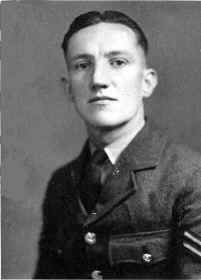
Photo submitted by his son Pat thought to have been taken in Greece
Follow up on above information:
Hello Rob,
I have LAC Cleary as a M/Rig. as of 18 July 1940 on a movement order (to Helwan).
In an Administrative order of 16 August 1940, he is among the ground crew that is to be re-posted to 274 Squadron on this unit’s forming. On 22 August, this was changed and Cleary and five other ground crew remained in 33 Squadron while five others were sent to 274 Squadron – as a side note the following page (114) in the appendices to the ORB is very curious since it is written in German!
In the movement order from 16 September, he is a metal rigger (together with three others). The movement was to Fuka satellite.
This is what I have on him!
Best wishes/Håkan
Dr. George Christidis was born in Yiannina (the town of John) in Greece and studied dentistry in Boston, Massachusetts. The Second World War found him practicing dentistry in Athens and when he was mobilized, he acted as interpreter of 112 Gladiator Squadron of the R.A.F. which was operating against the Italians. Up to April 6, 1941, he had quite a bit of fun, but when Germany attacked Greece, the Squadron was moved out and he was happy to help the ground crews escape to the Middle East.
In the Middle East he joined the Royal Hellenic Squadron and became the Adjutant of the only Greek Bomber Squadron operating from the great Gambut Airfield near Tobruk. Finally, he was transferred to South Africa where the Greek Air Force was training cadets in the various training centers of the British Government. He wound up as the last Greek Liaison officer in this country. He was demobilized here and since then he is a business man. His hobbies are speech- making with the Toastmasters, traveling all over the world and military history. Dr. Christidis spoke on the Battle of Waterloo and arrangements were made to obtain a copy of his talk for a future issue of the Society's journal.
Flt Sgt Ken Newton Cockram, RAFVR, 1425541 (NCO), 191882 (OFF), 3/6/43 to 24/6/44

Trained
in Rhodesia and did a spell with 73 OTU in Egypt he flew Kittyhawks with 112
on anti shipping and fighter patrols - once crashing his aircraft on take off
in a dust storm and completing a total of 198 operations.
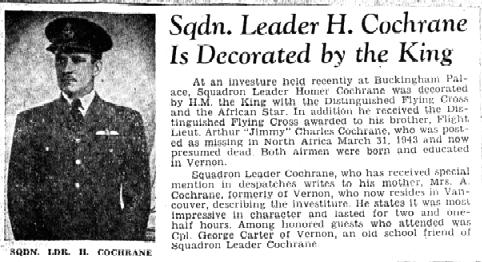
commander of "B" flight circa 1941 and had 9 kills and the DFC.
here are the planes he flew(serials):
AK463, AN220, AK502, AN231, AK495, AK367, AN442, AN390, AN413, AN218, AN330.
His favourite Gladiators were 5917, and 5829.
AN220 October 3rd, 41. one confirmed ME 109.
Photo supplied by Patricia Molloy daughter of J. F. Fraser
SQUADRON LEADER HOMER POWELL COCHRANE, D.F.C. Always flew AN330( wrong he flew various 112 Sqn planes), of Vernon B.C., like his brother enlisted in the RAF as a pupil pilot prior to the outbreak of the war. He flew with Nos. 112, 238 and 525 Squadrons racking up a score of 9 enemy aircraft destroyed, 2 probables, and one other damaged.
During the Albanian campaign his squadron encountered a vastly superior number of enemy aircraft. Cochrane, observing his leader's plane being attacked by four enemy aircraft, went to his assistance and the leader escaped. During the air battle Cochrane destroyed two enemy aircraft.
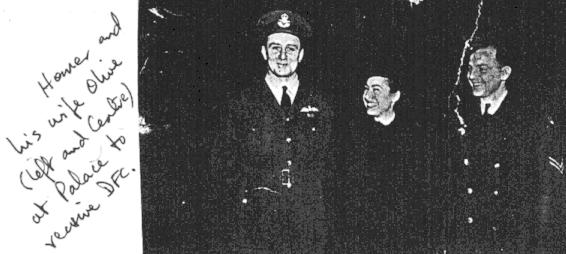
Photos from http://home.interlog.com/~lkane/
Flt Sgt William EdwardCocks, RAF victories 1
Cocking. Des : I served in 112 together with Dai Jones, Jim Worsford, Bob & Jock Des served from 1938 well on into about 1958, he started as a boy entrant I think and worked on radios. The last e-mail address I had for him no longer works
Flight Lieutenant Alfred Reuben Costello, RAF no. 41781, Costello was posted to 112 Squadron on 30 October 1940
Plt
Off Lewin Henry "Bunny" Curphey, J 7769
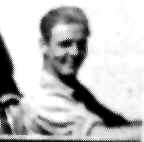
He had previous experience with 81 Squadron in European Theater Operations, he usually flew Kittyhawk EV360 on which he had the words BLONDE BOMBSHELL followed by an Angel painted under his cockpit in honour of his girlfriend Manon in Ottawa. Ontario, Canada
Pilot Officer J.M.S. CRICHTON, a Hurricane pilot arrived September 1941 and joined 126 Squadron
Crichton
HAMILTON SPECTATOR, 1942/11/26
*****************************************************
Group Captain John (Jackie) Darwen DSO, Bar

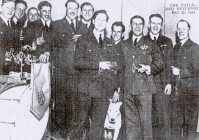
Group Captain J Darwen His going away party from 152 Sqn
Flew Kittyhawk Mk III FR 868 Coded JD
John Darwin was flying his Personal mount and was coded JD. There has been much debate on who owned this aircraft, but through my research I can say that the aircraft was not actually any Sqdns aircraft. The aircraft was a Wing aircraft looked after by, I believe, 112 Sqdn, but lost flying on a 260 Sqdn sortie, and was lost along with another aircraft during this sortie. His aircraft took a hit by an 88mm during a dive bombing attack and was seen to crash in flames
The Wing Cmdrs / Gp Capt's had their own aircraft looked after by a Sqn from the Wing (Eaton's aircraft looked after 3 RAAF). John "Jackie" Darwen was OC 239Wg at the time off loss. In the 112 Sqdn ORB it mentions his loss, but no loss recorded for their aircraft that day. There has been much confusion over this, but as stated a Wing aircraft not a Sqdn aircraft.
Group Captain John (Jackie) Darwen 33237, RAF, DSO, DFC Bar.
Was a career RAF officer and saw active service on the Northwest Frontier 1936-40. At the outbreak of WWII he returned to the UK and became Squadron Leader of 152 based in May 1941(with Pete Illingworth ( another 112 Squadron Commander) who took over 112 in '43 in Dorset as his wife's family were from there. J D Darwen's' wife had been killed while dancing with her husband n the Cafe de Paris in an London air raid in March 1941 aged only 20. In early 1942 he was posted to the Middle East and saw active service as Commanding Officer 243 Wing. He was no tent bound commander, rather he flew at every opportunity with his pilots. In early 1943 he became OC 239 Wing and it was said preferred to fly with 112 Squadron. 239 Wing moved from Africa via Malta to Sicily and were initially based at Paccino then Agnone Bari where they encountered their worst air strike by the Luftwaffe who were at Catania,
Once Sicily fell, 239 Wing moved rapidly to help create a bridgehead into Italy, 239 Wing was the first of the, Allied Air Force to land and control any airfield on mainland Italy (before they surrendered). They took Grottaglie in early September 1943. At that time both Tedder and Broadhurst (in his personal Spitfire) flew in to congratulate them all. Rapidly moving on to Foggia (Main) the weather began to turn and the Autumn of '43 in Italy was very wet. On 7 October he managed to get airborne, with his Wingman also later lost whilst flying with 260 Squadron and was shot down by flak in the late afternoon and KIA . He was 27 years old.
(Wingman lost on 7 Oct 1943 was Kenneth Trevalyn from Gloucester England aged 21. Hew was flying with 260 squadron when shot down. He crashed near Vasto, Italy)
Contributed by; Blaise Morris
The following is from http://www.airpowerint.com/aft_pages/AFT_online3.htm

Day, Robert holds his memories dear to his heart, especially as he reminiscences of days gone by when he served in the Royal Air Force of Britain in the war.
Nowadays Mr. Day dutifully sits in a rigid armchair in his room at St.Michael ’s Residential Aged Care in Ipswich, eager to relay a yarn or two of his days in the RAF and his move to Australia with his wife and children all those years ago.
Sixty years ago seems like a lifetime to most of us, but to Mr. Day he recounts his time in the RAF like it was just yesterday. Once he turned 18 years old he decided the Air Force was the way to go, and enlisted along with six other schoolboys all from his hometown street in London. After joining the RAF he became an armourer on the Kittyhawk at 112 Fighter Bomber Squadron where he describes his job as looking after the bombs and guns.
During his time in the squadron he worked with two assistants on two aircraft at a time in the Middle East. One particular day of the war is prominent in the veteran ’s memory: the day he saw his first aircraft that had teeth painted on its front that made it look like a shark. On this day he and some other RAF personnel were told to wait for the aircraft to arrive, and they soon saw the aircraft flying one behind the other around the aerodrome. Mr. Day recounted that when the aircraft were ready to land one of the men waiting said what they were all thinking: “they look like sharks.” The painted shark ’s teeth took the imagination of the squadron as they proceeded to organize a template of the teeth to be painted on their own Kittyhawk aircraft. The 112 Squadron was then the only squadron in the RAF that had the painted shark ’s teeth on the Kittyhawk, according to Mr. Day.
His time in the RAF during which he was posted throughout Europe and the Middle East was acknowledged with numerous campaign medals. Mr. Day was awarded the decorations of the Middle East Forces 1941-1943, Central Mediterranean Forces, BLA 1940, African Star and Clasp, 1945 Clasp, Italian Star, France Star, Germany Star and the General Services Medal.
During his wartime service Mr Day was associated with many Australian pilots who would encourage the young man to go to Australia after the war. He said the pilots told him how Australia always had “beautiful sunshine, no cold weather, plenty of work, easy to get a house, plenty of jobs.
”At first he said he thought the men were making it all up, but after at least half a dozen pilots from Australia kept telling him the same thing, he decided to see what the fuss was all about for himself. In 1951 he, his wife and their first daughter landed in Australia.
His first job in the country was as a station hand, but not enjoying that work he decided to get a job in a car factory as a welder. He was so efficient in his job that six months into it he was promoted to foreman and worked from 1951 until his retirement in 1976 at 60 years of age.
Mr Day keeps a treasured scrapbook of photos and memorabilia of his time in the RAF and his love of aircraft. Photographs of the young Mr Day, mates grinning in uniform and enlistment certificates along with other keepsakes fill the scrapbook.
His affiliation with the Kittyhawk bomber aircraft is apparent, as today he owns a scale-replica of a Kittyhawk along with a plush pillow bearing the aircraft on its stitching. Today, however he is a long way from his days in the RAF, as he enjoys the quiet life of St Michael ’s and the regular visits from his family members along with an occasional beer.
Flight Lieutenant George Millar 'Paddy' Donaldson, RAF nos. 580315 (NCO); 49277 (Officer), 112 & 501Sq, 1493 Flight, 1494 Flight victories 6
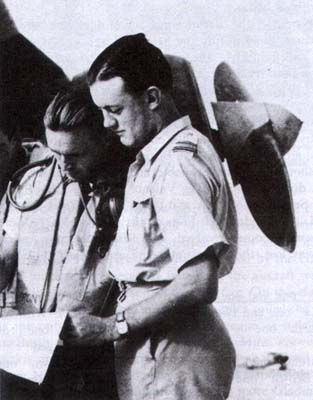
Squadron Leader Harry Lennox Innes
Taken when he was Sgt Donaldson, photo supplied by Patricia Molloy daughter of J. F. Fraser
He was to claim five and two probable during operations in Greece, before the unit was withdrawn via Crete in April 1941, following the German invasion.
He was posted from 112 Squadron on 30 May 1941.
Back in Egypt, he joined 102 MU in June as a test pilot, moving to 107 MU in August. Here he served for nearly a year, testing mainly the American types being delivered for WDAF, and gaining an "Exceptional" rating as a pilot.
In July 1942 he returned to the UK, where in October he joined 501 Squadron, having been commissioned on his arrival home. Based in Northern Ireland with the unit, in February 1943 he was promoted Flying Officer and moved to 1493 Flight as Gunnery Officer. He then became Gunnery Officer at Ballyhalbert and in July 1944, as a Flight Lieutenant, was Sector Gunnery Officer, and OC 1494 Flight. He attended OATS, Cranwell, in January 1945 and then joined a conversion flight at Sydenham until 1946.
Donaldson ended the war with 6 victories, all of them claimed while flying Gladiators.
After leaving the conversion flight, Sydenham, he attended a course at 1335 Test Conversion Flight at Molesworth and was posted to 263 Squadron on Meteors, where he remained for a year. He then undertook the Day Fighter Leaders' Course at CFE, West Raynham, before joining 19 Squadron on Hornets as a flight commander in April 1947. Late in 1948 he became Weapons Officer at 19's base, Church Fenton, but early in 1949 broke his leg badly whilst playing rugby, and was in hospital for nine months. On release he lost his flying category and transferred to the Secretarial Branch, attending 15 Administration Course at Bircham Newton. He served at Lindholm and Henlow until October 1951, then going to Air Ministry ACAS(I) as an Acting Squadron Leader on intelligence work. In February 1954 he began an exchange posting to the USAF, working in the Directorate of Intelligence in Washington until November 1956. A return to Air Ministry to similar duties caused him to take early retirement in March 1958, following which he joined Midland Bank, serving in London until 1976, when he retired.
Donaldson died in 1986. Both his son and daughter also entered the service.
Eric Dickinson, 64920, RAFVR, 112 Sqdn service from 28/4/42 to 28/5/42, shared a tent with Duke

Pilot Dickinson joined the RAFVR in 1941 and was commissioned and posted to the
Middle East. On 27th May 1942 he was shot down an returned on foot the next day. He failed to return
28 May after, being shot
down by Bf 109's of JG27.
Plt Off Bert Benjamin Edye Duff, 40684, RAF, 112 Sqdn service 16/5/39 to 12/11/40
Photo supplied by Patricia Molloy daughter of J. F. Fraser
Fig. Offs. to be Fit. Lts. (war subs.): 3 September 1941
Fit. Lts. (temp. Sqn. Ldrs.): 7 March 1942
Neville Frederick Duke, 61054, RAFVR,

Tuesday 26 February 1942 Duke acquires a new Kittyhawk and paints Jager on the side (German for hunter or chaser, he also put up 8 strikes on the tail plane. The new machine replaced GA V AK578 which was pretty much worn out. The new machine was probably AK707 GA Y This machine was shot up along with 6 others two of which burnt out at Gambut during a ground strafe by 109's. The planes had flown up there to be on standby Friday 27 February 1942
Planes flown while with RAF 112 Sqdn:
| 1941 | Tomahawk Mk IIB |
| Dec 1941 | AK354, GA-L, |
| Nov 1941 | AK402, GA-F, |
| Nov 1941 | AK413, GA-K, |
| Nov 1941 | AM390, GA-W, |
| Dec 1941 | AN337, GA-F, |
| Dec 1941 | AN340, GA-B, |
| 1942 | Kittyhawk Mk I |
| Jan 1942 | AK578, GA-V |
| Jan 1942 | AK595, GA-Y |
| Jan 1942 | AK602 |
| Jan 1942 | AK652, GA-D |
| Jan 1942 | AK653, GA-G |
| Jan 1942 | AK673, GA-F |
| Jan 1942 | AK682, GA-U |
| Feb 1942 | AK578, GA-V |
| Feb 1942 | AK707, GA-Y |
| Mar 1942 | AK900, GA-A |
| Mar 1942 | AK957, GA-D |
92, 112 & 145Sqn, victories 26.83, posted to 112 Sqdn sometime in November 1941
The London Gazette Issue 35491, 17 March 1942 page 3 of 48
Distinguished Flying Cross.
Pilot Officer Neville Frederick DUKE (61054), Royal Air Force Volunteer Reserve, No. 112 Squadron. One day in February, 1942, Pilot Officer Duke was the leader of a section of a wing when he sighted 35 enemy aircraft. He informed the wing leader and led his section to attack. In the ensuing combat n enemy fighters were destroyed by the squadron, 2 being destroyed by Pilot Officer Duke. This officer's leadership contributed materially to the success achieved. He has destroyed 8 enemy aircraft and probably destroyed and damaged a further 6.
· Squadron Leader Neville Frederick Duke, test pilot, born 11 January 1922; died 07 April 2007
http://www.guardian.co.uk/military/story/0,,2057114,00.html
Personal aircraft was AL161 GA ? around June 1942
Billy Drake 1942,
1 & 213Sq, 421 Flight, 128 & 112Sq, 20 Wing; total victory count may be 24.5, took Command of 112 Sqn 24th May 1942 to 16th January 1943
Drake joined No 1 Squadron in May 1937 and went with the squadron to France in September 1939 and during April/May 1940 scored around 5 victories before being shot down, wounded and flown back to England. After a short spell as a flying instructor, he was posted to 213 Squadron on October 2 1940, and three weeks later he joined 421 Flight, as a Flight Commander. He was awarded the DFC (7.1.41). In October he formed and commanded 128 Squadron in West Africa, then commanded 112 Squadron. Awarded a Bar to the DFC (28.7.42) and the DSO (4.12.42). He took command of the Spitfire Wing in Malta in June 1943. He received the DFC (US)(22.10.43) and was appointed Wing Leader 20 Wing, Typhoons, in late November. He took part in the first Battle of Britain flypast in September 1945. His final score card was 24 victories and he retired from the RAF on July 1 1963.
Drake
was born in London on December the 20th 1917. Rejoined the RAF on a short
service commission in July 1936. He was posted to 6 FTS, Netheravon on September
the 19th and with training completed, he joined No 1 Squadron at Tangmere on May
the 22nd 1937. Drake went to France with the squadron in September 1939 flying
Hawker Hurricanes. On April the 20th 1940 he destroyed a Bf 109 and possibly
another, on May the 10th a He 111 and on May the 13th he shot down a Do 17 and
probably another but was jumped by Bf 110s and shot down. He baled out, wounded,
was taken to a French hospital and later flown back to an RAF hospital in
England. He arrived at 6 OTU, Sutton Bridge on June the 20th 1940 for flying
instructor duties. Drake returned to operations when he was posted to 213
Squadron at Tangmere on October the 2nd 1940. Three weeks later he joined 421
Flight at Hawkinge, as a Flight Commander. On December the 7th and 27th Drake
shared in the probable destruction of two Do 17s and on January the 7th 1941 he
damaged two Ju 88s. He was awarded the DFC (7.1.41). He was posted to 53 OTU,
Heston in February, as an instructor. He went overseas in early October to form
and command 128 Squadron at Hastings in West Africa. On December the 13th Drake
shot down a Vichy French M-167F near Freetown. Drake went to Air HQ Middle East
in April 1942 and was given command of 112 Squadron flying Kittyhawks at Gambut
on May the 24th. He claimed a probable Bf 109 on June the 6th, another probable
on July the 2nd, destroyed a Bf 109 on the 8th, damaged a Ju 88 on the ground on
the 19th, destroyed a Bf 109 on the 24th, two Ju 87s on September the 1st and
another Bf 109 on the 13th. Drake shared a Ju 87 and probably destroyed another
on October the 1st 1942, got a probable Bf 109 on the 22nd, destroyed another on
the 26th, a Me 202 on the 27th, a Ju 87 on the 31st, a Bf 109 destroyed and
another damaged on November the 5th, a Bf 109 destroyed on the ground on the
11th, a He 111 destroyed and a Bf 109 damaged on the 15th, a Bf 110 destroyed
and another damaged on the 19th, a Me 202 and a Bf 109 destroyed on December the
11th and he finally shared a Bf 109 on the 13th. Drake was awarded a Bar to the
DFC (28.7.42) and the DSO (4.12.42). In January 1943 he was promoted to Wing
Commander and posted to HQ RAF Cairo. He took command of the Spitfire Wing in
Malta in June 1943 and before returning to the UK he was credited with another
six enemy aircraft destroyed. He received the DFC (US)(22.10.43). Drake was
appointed Wing Leader 20 Wing, Typhoons, in late November 1943 and in May 1944
he was sent to America on special duties. Back in the UK, he was made Deputy
Station Commander at Biggin Hill and later went to HQ SHAEF to serve in the
Operations Room. He took part in the first Battle of Britain flypast in
September 1945. Drake retired from the RAF on July the 1st 1963, as a Wing
Commander, retaining the rank of Group Captain.
London Gazette issue 35646, 24 July 1942, page 2 of 10
Bar to -Distinguished Flying Cross.
Acting Squadron Leader Billy DRAKE, D.F.C. (39095), No. -112 .Squadron. Squadron Leader Drake is a skilful pilot and a fine leader. He has displayed great energy and has led his squadron on every sortie in the latest battle of -Libya. One day in June, 1942, an attack was made against Gazala aerodrome which resulted in a number of enemy aircraft being destroyed or damaged on the ground. Squadron Leader Drake has personally scored hits on enemy transport vehicles and on a heavy tank. In addition he has destroyed at least 5 enemy aircraft and damaged a number of others in air combats.
Commanding Officer – Major Drake; (Billy Drake DSO DFC* Joining the RAF in 1936, Billy Drake flew Hurricanes in France at the outbreak of war, seeing action during the spring of 1940, and scoring his first victory in May. After being wounded he was soon back in the fray with 421 Flight and by the end of 1940 his tally had reached 4. Posted to the Western Desert in early 1942, he took command of 112 Squadron flying P-40 Kittyhawks and led the squadron through a period of great success. He later served in Malta, and then as Wing Leader of 20 Wing, 2nd TAF flying Typhoons in the lead up to the Normandy Invasion. Billy Drake scored 24 1/2 victories and in addition, another 13 aircraft destroyed on the ground. He retired from the RAF in 1963.)
Some of the members late Oct / early Nov 1942, during Drakes tenure:
Commander of "A" squadron – Captain Eric Saville (112,250 and 2 Sqn SAAF);
Commander of "B" squadron – Captain Geoffrey William Garton RAF, 67034, DFC, DSO (also flew with 73 Sqn Battle of britain;
Adjutant of unit – First Lieutenant E Evans; 61615, 27 6 42 to 9 11 44 Adjt.,
Intelligence officer – First Lieutenant Carroll;101105. 5 6 41 to 14 3 43
Sqn Ground Defense Plt Off S J Rhodes, 108850, 4 9 42 to 1 6 43
Sqn Engineering Officer: Plt Off H T Legg
Sqn Technical Officer: Fg Off J H Pepper, 103294. 6 8 42 to 14 12 43
Sqn Medical Officer: Flt Lt E J F Eberle 110805, 2 5 42 to 2 6 43
Officers of flying staff :
Plt Off J M S Crichton, J.5032 RCAF, 22/5/42 to 11/1/43
Flying Officer Keith Ronald Gardener (RAF No. 103554), 12/6/42 to 26/10/42
Fg Off Thomas (Tom) Livingstone RAFVR 61967, 27/8/42 to 20/6/43
Plt Off David Alistair Bruce, 80213, RAFVR KIA 10/3/43, 27/5/42 to 10/3/43
Plt Off Brian Anthony Fredrick Cuddon, 115619, RAFVR, 1/5/42 to 11/12/42
Fg Off Lewin Henry Curphey, RCAF, J/7769, 5/7/42 to 13/1/43
Flt LT Desmond Ibbotson, 129238 DFC and Bar RAFVR, KIA 19/11/44, 16/6/42 to 12/10/42
Plt Off Howard Lynn Philips, J/8653 RCAF (American), 24/7/42 to 11/11/42
Fg Off Robert G Sayle, 115773,15 9 42 13 1 43 POW, 15/9/42 to 13/1/43, deceased
Plt Off George William Wiley J/7234 RCAF, POW, shot by guards 31/03/44, 1/8/42 to 10/3/43 and
Plt Off John Garn Wright; RCAF, J.7233 victories 2, 5/7/42 to 24/5/43
Non-commissioned members of flying staff :
WO J B Agnew,
Flt Sgt W D Brown, R/86267, RCAF, Victories (2) 2 ju 87, 31/10/42, Bf-109 Damaged West of Fuka 4/11/ 42, Bf-109 Probable East of El Garanigh Libya and Bf-109 damaged in the same place 11/12/42.. 7/10/42 to 19/9/43
Also credited with bringing down Bf 109 Black 6. which was subsequently captured by RAAF 3 Sqdn.
Fit Sgt D J Howe RCAF, 74045, not listed (ORB) as having flown any operations with 112 Sqdn this is incorrect information from Robin Brown's Book Shark Squadron see the corrected record on the link provided. 2/10/42 to 4/3/43
Sgt Lyle C Shaver, J17058, RCAF 17/12/42 to 26/9/43
Sgt Randolph Charles Carlyle Smith J16175 RCAF, was a Canadian residing in Detroit USA, 1/8/42 to 10/3/43
F/Sgt David B. Brown, 1381428, RAF, 2/9/42 to 9/12/43
Sgt N A Clarke, 1169208, 22/2/42 to 13/1/43
Flt Sgt Richard DeBourke, R79049 RCAF (American), 10/7/42 to 10/3/43
Sgt Michael Hugh Lamont, 776196,RAFVR, ??/9/42 to 22/4/43
Sgt Joseph Gerard Rodger "Jerry" Lecours, RCAF, R79289 1 victory, , 14/10/42 to 5/2/43
Sgt John McIver Sherman MacAuley RCAF, 77152, 11/8/42 to 2/7/43
Sgt Thomas Arthur Marsden, 993301, RAFVR, 10/6/42 to 27/2/43
Sgt Arthur Fredrick George Martin, RCAF, 97115, 28/8/42 to 30/10/42
Sgt William "Bill" Money 1378132, 24/8/42 to 24/??/42
Sgt Raymond H Newton, RNZAF, 411437, 25/5/42 to ??/4/43 then again 1/7/44 to 25/12/44
Sgt William E Pollock, RCAF, (American) 63166, 21/8/42 to 17/12/42
Sgt Albert "Artie" Shaw, RCAF, 83102, 11/8/42 to 19/2/44
Sgt. Herbert Simeon Snelgrove, RCAF, 14/10/42 to 9/12/43
Sgt D S "Butch" Watson, 516585, RAF, ??/10/42 to 13/1/43
Sgt Raymond Webb, RAFVR, 1313162, 23/10/42 to 7/11/42
Reginald Albert Wild, RAAF..407884, 28/8/42 to 4/9/43 then again 15/7/44 to 11/11/44
Sgt Cedric Don Young, RNZAF, 411490, 10/7/42 to 15/9/42
SUPPLEMENT TO THE LONDON GAZETTE, 36051 page 3 0f 10, 8 JUNE, 1943
Aus-4O7415 Flight Sergeant Roy Arthur DREW

Distinguished Flying Medal. Supplement Gazette 2679, 11 June 1943
Aus-4O7415 Flight Sergeant Roy Arthur DREW, Royal Australian Air Force, No. 112 Squadron (deceased). Awarded with effect from 2nd June,1942.
Numb. 37776 5403
Sgt Alexander Tait Donkin,1055285, RAFVR

Flt Sgt
Reginald William
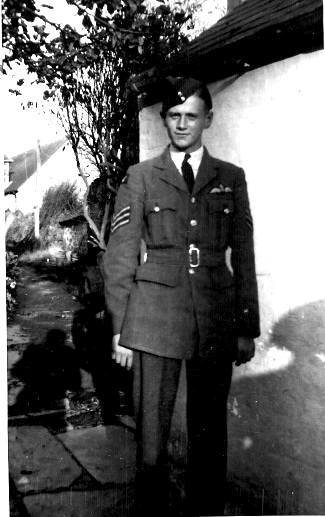
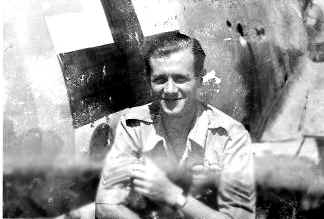
Flight Log Book Extracts from his time with RAF 112 Sqdn
Reg was born in Ivybridge, Devon, England and volunteered for the RAF in September 1940. Following initial pilot training at Anstey in the Midlands, his first operational role was as a Ferry Pilot, flying an assortment of aircraft from West Africa to Egypt. His first front line assignment was to RAF 112 Sqdn, joining them in the Western Desert, completing a total of 197 operations on various missions. He remained with RAF 112 Sqdn thru the desert and on into Italy, participating in numerous ground attacks and was credited with an FW-190 damaged on 7 April 1944, flying Kittyhawk III, coded GA-F serial number FR390. Following his tour with RAF 112 Sqdn Reg went to the Flying Instructors School Aug.44 - Oct. 44. flying Oxfords He saw further service flying Lancaster Bombers with
153 Sqdn. He returned to fighters after the end of the war flying Spitfires as part of the Bomber Defence Flight ( this was a unit used to train the Bomber squadrons how to avoid attacks from fighters: the Spitfires use to go up and play the part of the enemy.
In all Reg served 41 years in the RAF, mostly in Pilot training, in the United Kingdom and Overseas. He was loaned from the RAF to Canada, the British Antarctic Survey Team, the Falklands Isle Air Service, Zambian Air Force and the Singapore Air Force. He has received the Queens Commendation for valuable service in the air.
Reg Drown retired with the substantive rank of Squadron Leader, he has logged over 10,000 hours of flight time and now enjoys life in the Channel Island of Jersey with his wife Camille.
